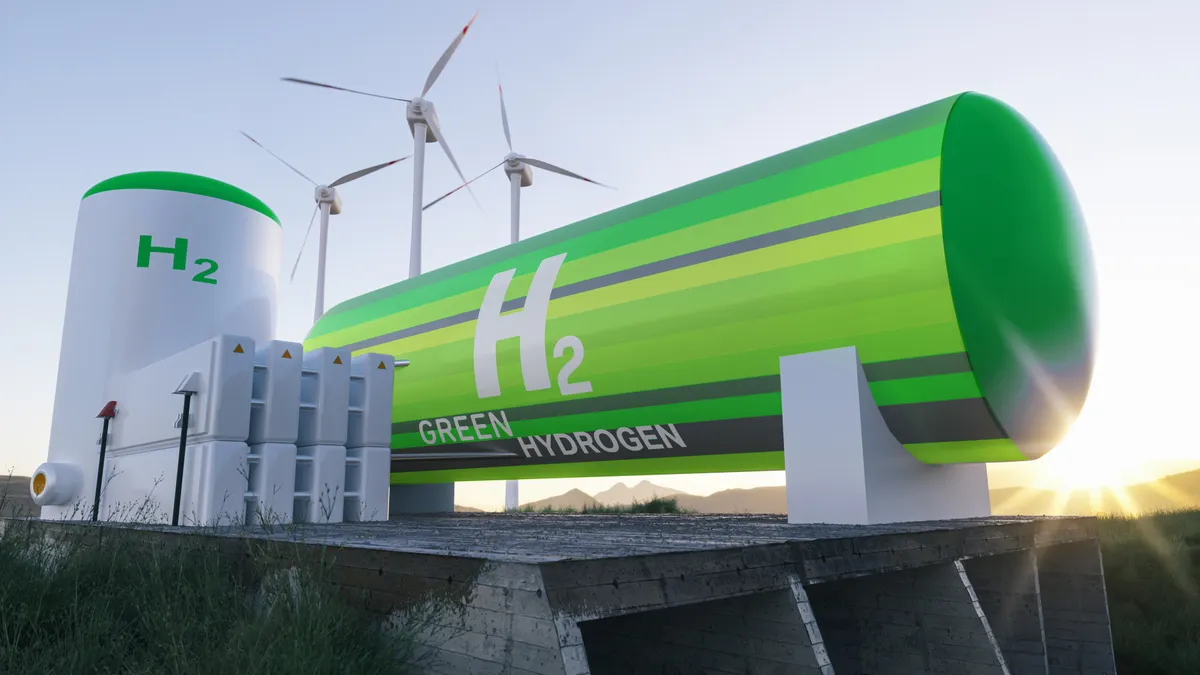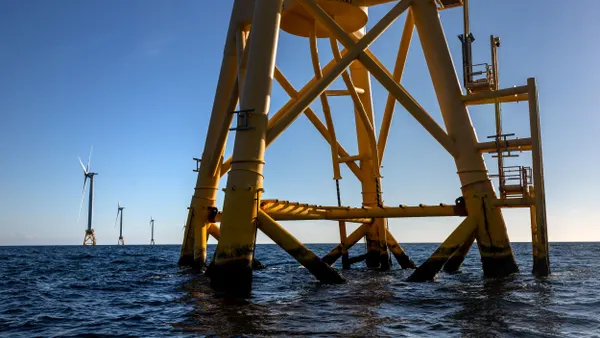Dive Brief:
-
A group of 11 leading hydrogen and renewable energy companies signed a letter dated June 15 calling on the Biden administration to adopt hourly time-matching standards for the hydrogen tax credits created by the Inflation Reduction Act.
-
Although sometimes viewed as a debate between environmentalists and industry, a growing number of companies agree that hourly matching requirements, which would require green hydrogen companies to verify their renewable energy use on an hourly basis, would be good for the hydrogen industry in the long term, according to Beth Deane, chief legal officer for electrolyzer manufacturer Electric Hydrogen.
-
Hourly matching is the likely end-game for hydrogen production tax credits, but the industry would benefit from a more gradual phase-in of the requirements, said Dave Edwards, director and advocate for hydrogen energy at Air Liquide, which did not sign the letter.
Dive Insight:
When should the hydrogen industry move from annual emissions matching to hourly matching for clean energy use and consumption? Some hydrogen and renewable energy companies say it could happen sooner than you might think — and others are less certain.
Electric Hydrogen joined 10 other companies, including Avantus, First Solar and Leeward Renewable Energy, in signing a letter to the Biden administration on Thursday that called for the Treasury Department’s forthcoming guidance on the newly created production tax credits for green hydrogen to include an hourly and location-based emissions matching requirements. The letter calls for a “compromise solution,” that would include a brief transition from annual emissions reporting to hourly reporting.
“A short transition period to allow time for implementation of hourly tracking would not meaningfully increase system-level emissions or grid congestion problems,” the letter said.
Both proponents and opponents of hourly matching generally agree that the registries necessary to support hourly emissions matching do not currently exist in most regions. But Deane said she believes these registries could be set up faster than some may assume — perhaps in as little as one to three years. That could put a timeline for transitioning to an hourly matching requirement in the 2024-2027 range, she said.
Air Liquide agrees that the hydrogen industry will gradually transition from annual to hourly matching, Edwards said. But Edwards expressed reservations about regulatory requirements that would aim to force that transition more quickly.
Because hydrogen is difficult to transport and because long-distance hydrogen pipelines generally do not exist, transportation of hydrogen is limited to a few hundred miles in many cases, he said. That means production, for now, must take place on a local level. And not all regions of the U.S. have access to enough renewable energy to match emissions by the hour, he said.
“Hydrogen is going to be necessary for hard to decarbonize industrial sectors — steel cement, some transportation. A lot of heavy applications are going to require it,” Edwards said. “We can’t wait to be making those investments until the entire grid is optimized. We need to co-develop these solutions.”
But Deane said she believes setting a shorter deadline for the green hydrogen industry’s transition to hourly matching would be beneficial to the industry in the long-run. Renewable energy is one of the largest costs of green hydrogen production, she said. An hourly matching requirement would drive the construction of more renewable energy up front, which would in turn drive down the cost of hydrogen production, according to Deane. Cheaper hydrogen would allow the industry to scale more rapidly, she said.














